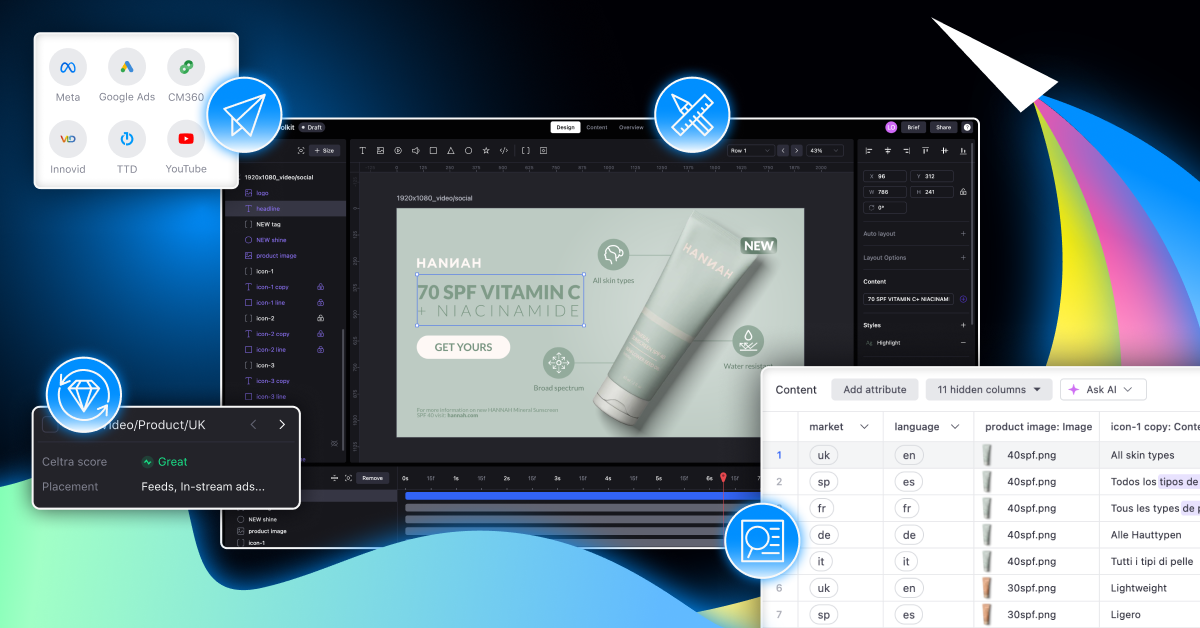According to Forbes – and to no marketer’s surprise – trust is still a deciding factor in purchase decisions. Brand consistency is one of the building blocks for gaining and keeping it. But how can brands stay cohesive across more channels, platforms, and ad formats than ever before?
The importance of brand consistency across multiple channels
We live in a world where consumers can choose from endless options for practically every item they buy online or offline. Multiple factors influence their choices, but marketers have been aware for years that cohesive branding is one of the main drivers of consumer trust and sales. Brand consistency provides consumers with feelings of safety, trustworthiness, and reliability, but with the explosion of channels, staying on-brand across all platforms at all times is becoming increasingly more difficult. And yet, more important than ever.
Getting to choose from multiple options is great, especially at first, but besides giving you freedom, it also leaves you with the responsibility of making the right choice. Having more choices doesn’t usually make it easier to decide – remember when your chemistry (insert your most dreaded school subject) exam turned out to be multiple-choice, which seemed great, but then when you’d start actually reading the answers and you’d slowly realize that choosing from several uncannily similar answers won’t make your task any easier. You’d still have to do your own research.
Similarly, in a multiple-choice shopping world, consumers are now used to doing a lot of research before their final purchase decision, checking multiple channels, platforms, and sources. According to Google, 53% of shoppers say they always do research before they buy to ensure they are making the best possible choice. And as consumers become increasingly savvy researchers, garnering all the information they can get before taking the plunge, brands need to maintain a strong and cohesive presence across all those sources, ie. marketing channels.
The math is clear – consumers don’t want to make the wrong purchase decision, so they’ll opt for strong brands they feel can shield them from making such mistakes. In other words, brands they trust.

Brand trust – hard to earn, easy to lose
If consumers trust your brand, it means they’re willing to spend their time and money with your business rather than your competitors.
Besides positive customer service experiences, alignment in values, and, naturally, reliable products, brand consistency is one of the key elements for building brand trust:
- Consistent branding establishes reliability. Including on-brand creative assets such as logo, messaging, and visual identity across all your ads creates a feeling of dependability.
- When consumers encounter consistent branding across multiple channels and platforms, it reinforces their memory of the brand. Over time, this repetition makes the brand and its products easy to recognize.
- On-brand ads show that the brand has a clear identity and knows how to effectively communicate its values and offerings. This professionalism instills confidence in consumers and reassures them that the brand is competent and trustworthy.
- Consistency fosters an emotional connection with consumers. When a brand consistently delivers on its promises and maintains a cohesive brand experience, it builds loyalty among consumers, making consumers feel more connected and invested in its success.
- When a brand’s messaging, visual identity, or product offerings vary across different channels, it can create uncertainty and erode trust. Consistency helps in reducing confusion and doubt by providing a clear and unified brand experience.
You know what they say about trust – it’s hard to keep it, but ridiculously easy to lose it. The question is how can you make sure you don’t lose brand trust in an omnichannel world where your brand must maintain a presence across all sizes, formats, and platforms?
How Creative Automation can help marketers effortlessly establish brand consistency at scale
Tools like Celtra’s Creative Automation cloud-based software platform can make achieving brand consistency easy while keeping up with the growing number of markets, channels, sizes, and formats.
Here are 5 things Creative Automation can help marketing and design teams do better and faster to ensure brand consistency:
- Enforce brand guidelines: Celtra’s software lets you automatically incorporate your existing creative assets such as logo, color palette, typography, tone of voice, and imagery style in your ads.
- Utilize design templates for scaling creative: With Celtra, you can easily create design templates that adhere to your brand guidelines and empower even non-designers to use them for different marketing aims, channels, and ad campaigns.
- Enjoy full control of creative assets in one spot: By using an end-to-end cloud-based software platform to review and organize all your creative assets, all team members have access to the latest brand assets, which eliminates the risk of using outdated or unauthorized materials.
- Easily review and update custom creatives at scale: When you streamline workflows on an end-to-end cloud-based software platform, you can easily review and update creative assets at scale. This simplifies cross-team communication and ensures all content aligns with brand standards and guidelines.
- Effortlessly launch on-brand creative assets across all major platforms: Creative automation platforms like Celtra let you produce all your digital content for an easy launch across all major platforms and channels.
Want to see how the magic works? Get in touch with our team and find out how Creative Automation can help you maintain brand consistency at scale.






